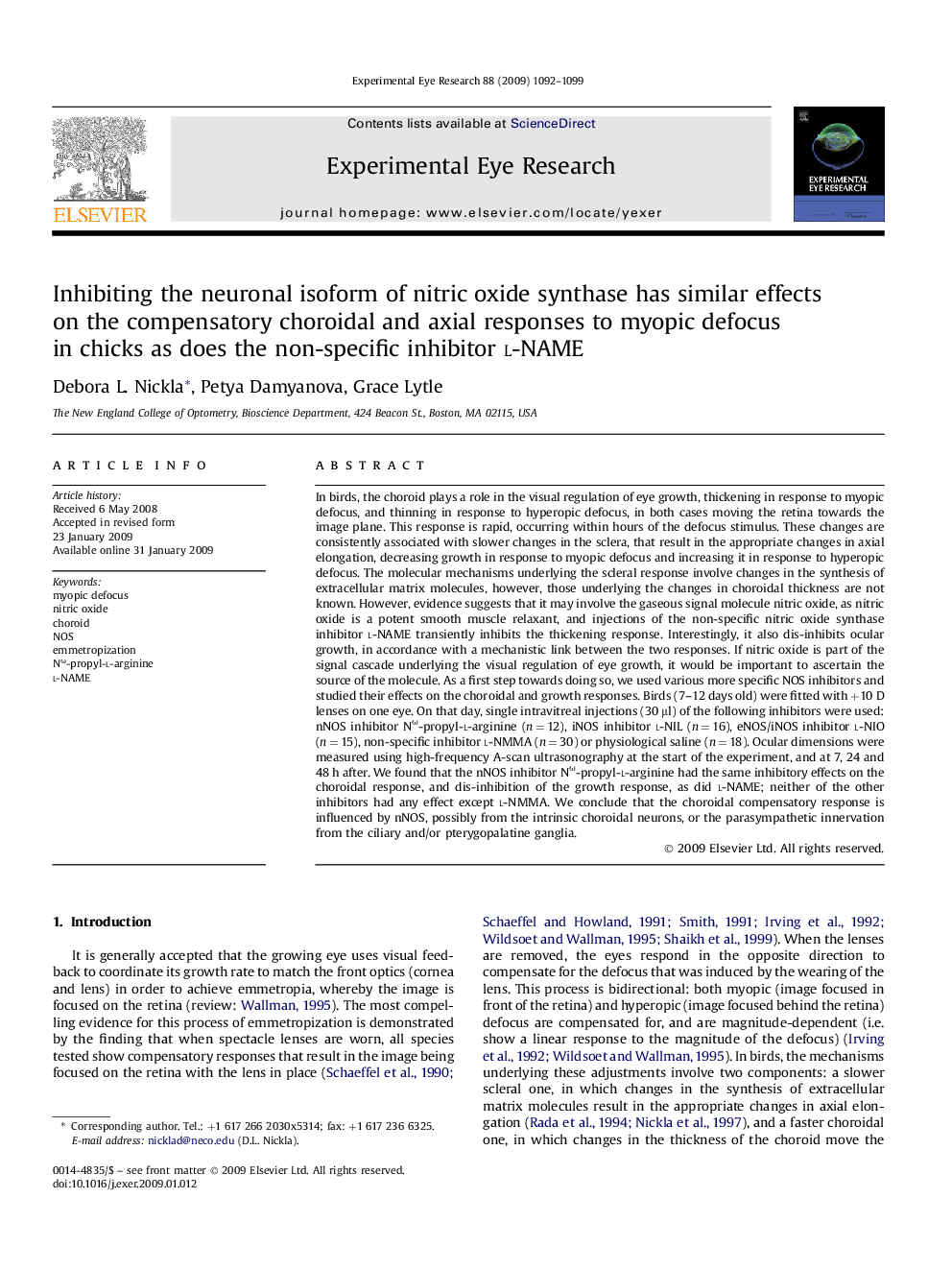| Article ID | Journal | Published Year | Pages | File Type |
|---|---|---|---|---|
| 6197630 | Experimental Eye Research | 2009 | 8 Pages |
In birds, the choroid plays a role in the visual regulation of eye growth, thickening in response to myopic defocus, and thinning in response to hyperopic defocus, in both cases moving the retina towards the image plane. This response is rapid, occurring within hours of the defocus stimulus. These changes are consistently associated with slower changes in the sclera, that result in the appropriate changes in axial elongation, decreasing growth in response to myopic defocus and increasing it in response to hyperopic defocus. The molecular mechanisms underlying the scleral response involve changes in the synthesis of extracellular matrix molecules, however, those underlying the changes in choroidal thickness are not known. However, evidence suggests that it may involve the gaseous signal molecule nitric oxide, as nitric oxide is a potent smooth muscle relaxant, and injections of the non-specific nitric oxide synthase inhibitor l-NAME transiently inhibits the thickening response. Interestingly, it also dis-inhibits ocular growth, in accordance with a mechanistic link between the two responses. If nitric oxide is part of the signal cascade underlying the visual regulation of eye growth, it would be important to ascertain the source of the molecule. As a first step towards doing so, we used various more specific NOS inhibitors and studied their effects on the choroidal and growth responses. Birds (7-12 days old) were fitted with +10 D lenses on one eye. On that day, single intravitreal injections (30 μl) of the following inhibitors were used: nNOS inhibitor NÏ-propyl-l-arginine (n = 12), iNOS inhibitor l-NIL (n = 16), eNOS/iNOS inhibitor l-NIO (n = 15), non-specific inhibitor l-NMMA (n = 30) or physiological saline (n = 18). Ocular dimensions were measured using high-frequency A-scan ultrasonography at the start of the experiment, and at 7, 24 and 48 h after. We found that the nNOS inhibitor NÏ-propyl-l-arginine had the same inhibitory effects on the choroidal response, and dis-inhibition of the growth response, as did l-NAME; neither of the other inhibitors had any effect except l-NMMA. We conclude that the choroidal compensatory response is influenced by nNOS, possibly from the intrinsic choroidal neurons, or the parasympathetic innervation from the ciliary and/or pterygopalatine ganglia.
